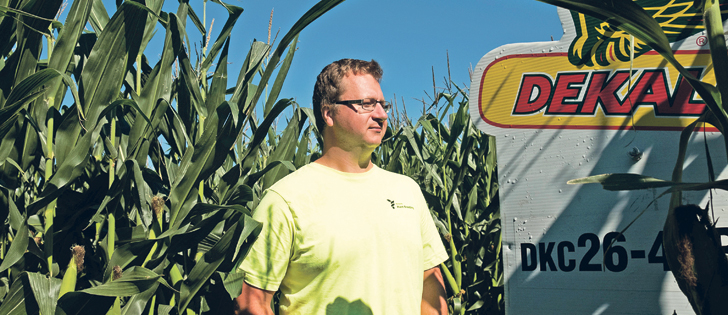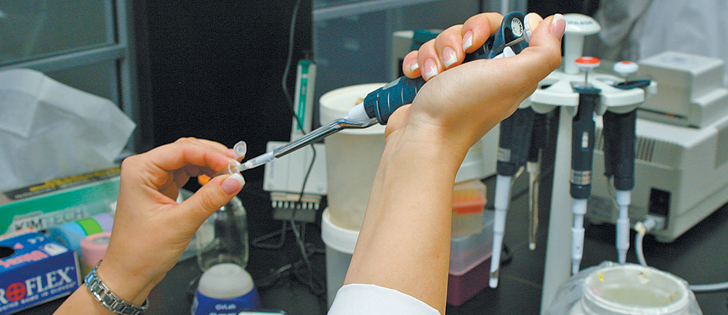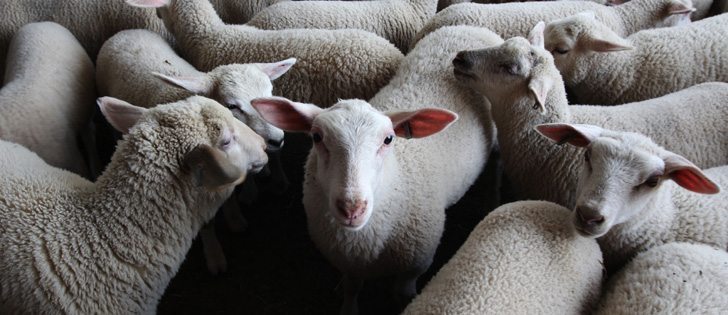Gene discoveries | Canadian officials working to stack resistant genes to guard crops against Ug99 stem rust
The discovery of three wheat genes that are resistant to Ug99 stem rust will help the Canadian wheat industry stay a step ahead of the devastating wheat disease.
Canadian researchers, led by Agriculture Canada wheat pathologist Tom Fetch, have identified three previously undescribed wheat genes that are resistant to Ug99.
Ug99 is a deadly race of stem rust that was first discovered in Uganda in 1999.
It has since spread to other wheat producing countries, where it has overcome other sources of genetic resistance in existing wheat varieties.
Read Also

Farming Smarter receives financial boost from Alberta government for potato research
Farming Smarter near Lethbridge got a boost to its research equipment, thanks to the Alberta government’s increase in funding for research associations.
The new genes identified by Fetch are in various stages of mapping and utilization.
The first, SrCad, was identified in 2005 and has been used in experimental wheat crosses for the past seven years.
The first new Canadian wheat lines that contain the SrCad gene are nearing registration and could be available to Canadian growers within five or 10 years, hopefully before Ug99 reaches Canada.
The eventual goal is to stack two or more of the Ug99 resistant genes in new Canadian wheat varieties.
Stacking resistant genes allows plant breeders to prolong resistance and protect Canadian wheat production from Ug99.
“These rusts move fairly quickly on the wind, and the spores can move quite a long ways sometimes … and as well they can move on the clothes of tourists,” said Fetch, part of a Canadian research team that recently received $1.26 million in research funding under the Growing Forward 2 framework.
“We’re in the process now of developing better molecular markers, so we can stack these genes together and prolong resistance.”
The $1.26 million announced in November is the second round of funding to support Fetch’s Ug99 research.
In 2009, the project received $13 million in government funding.
The initial project involved 18 scientists, including pathology experts, geneticists, molecular marker experts and wheat breeders.
The second phase of research will continue work that has been accomplished since 2009 and will involve many of the same experts.
Fetch’s interest in Ug99 resistance took a major step forward in 2005 when he planted 100 Canadian wheat varieties in Ug99 nurseries in Kenya to check for resistance.
Of the 100 varieties tested, only two showed resistance.
“That first year was quite an eye opener because I only had two good lines and pretty much everything else was susceptible,” Fetch said.
The two Canadian varieties that showed resistance were Cadillac and Peace.
Both contained the Lr34 gene, which is known to provide resistance against some types of wheat rust.
They also contained a second gene that has since been mapped and named SrCad.
Fetch said one of the main challenges in dealing with Ug99 is its ability to overcome existing sources of rust resistance in wheat varieties that have already been commercialized.
“There are some effective resistance genes, like SrCad, but in general, as a fungal race of stem rust … Ug99 has a very high virulence pattern,” he said.
“Virulence is a term that we use to talk about the capability to attack specific genes, so something that has a lot of virulence can actually overcome most of the stem rust resistance genes that are known to exist in wheat varieties all over the world, including Canada.”
Because of its high virulence, Ug99 was able to overcome natural resistance conferred by another gene, Sr31 gene, which was used widely by wheat breeders around the world.
“Sr31 provided really good resistance to stem rust … and until Ug99 came along, there really weren’t any stem rust races known that could actually attack (Sr31),” he said.
“A lot of wheat breeding programs used that gene and they used only that gene (to fight stem rust) … but once Ug99 came along, they kind of had all of their eggs in one basket and a whole stack of cards came tumbling down in a lot of countries. In a lot of places in the world, everything became susceptible.”
Canadian wheat breeders did not use Sr31 because it had a negative impact on wheat quality
In addition to SrCad, Fetch’s team identified two other genes resistant to Ug99.
The SrWeb gene was found in Webster wheat, an old winter wheat line that originated in Russia and is used by pathologists as a check against other strains of wheat rust.
The SrTr-6a gene was identified in an experimental wheat line.
Scientists are developing molecular markers that will allow those genes to be more easily incorporated into new wheat varieties.
“All three were genes that hadn’t been published before and the even better news is that all three of them appear to come from a common wheat background, meaning they are very easy to use by wheat breeders,” Fetch said.

















